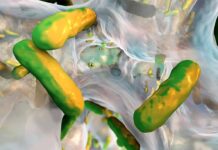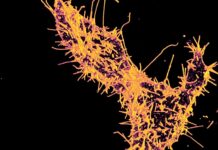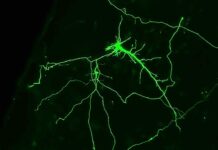Unveiling Intricacies: A Leap in Fluorescent Microscopy
Probing the enigmatic world of proteins, scientists have made remarkable strides in deciphering their cryptic dance using an advanced version of high-resolution fluorescence microscopy. Grasping the subtleties of protein dynamics demands meticulous scrutiny at the nanoscale, a daunting task given the minuscule dimensions of these molecular marvels.
Protein-Bead Complex: A Tenuous Connection
In an attempt to overcome these challenges, researchers once tethered proteins to beads, capturing the bead’s ballet as a proxy for the protein’s own motions. Alas, the bead’s cumbersome nature and disproportionate size marred the accuracy, leaving researchers with ambiguous findings.
MINFLUX: A Trailblazer’s Invention
Enter Stefan Hell, a biophysicist hailing from Germany’s Max Planck Institute, who in 2016 unveiled MINFLUX—a fluorescence microscopy tour de force capable of discerning proteins at nanometer resolution. The ingenious method employed an organic fluorophore tethered to the protein and a donut-shaped laser beam to stimulate the fluorophore. A serendipitous meeting of the laser beam and the protein within the beam’s dark epicenter would silence the fluorophore’s glow, enabling a precise protein location. MINFLUX swiftly found success, elucidating the nuclear pore complex and other macromolecules.
The Art of Tracking Motor Proteins: Linear Beams Enter the Fray
Linear Beams: A Novel Addition
In a recent Science publication, researchers chronicled an enhanced rendition of MINFLUX, now harnessing linear beams to seize movement along straight lines. They focused on kinesin, a motor protein tagged with a fluorescent marker, as it ambled down a microtubule.
Kinesin’s Eccentric Saunter
As kinesin traversed the microtubule rails within cells, ferrying neurotransmitter-laden vesicles, the scientists observed a peculiar gait. Kinesin’s walk displayed an uneven pattern of long and short strides, attributable to the protein stalk’s rotation. Moreover, they unveiled that ATP binds to the protein when one of its two head groups plants itself on the microtubule.
Beyond Motor Proteins: Conformational Changes & Drug Targets
This cutting-edge device holds promise for scrutinizing conformational changes in biomolecules beyond motor proteins. By delving deeper into protein dynamics, researchers might pinpoint novel drug-binding sites for pharmaceuticals. Martin Aepfelbacher, a microbiologist at the University Medical Center Hamburg-Eppendorf in Germany, previously utilized MINFLUX to visualize molecular machines in bacteria. This upgraded technique could empower his team to observe individual proteins in action, dramatically refining nanoscale biological observations.
MINFLUX Revolution: Implications of the Refined Microscopy Technique
Enhanced MINFLUX fluorescence microscopy holds profound significance for those striving to comprehend protein dynamics. By capturing motor proteins’ precise nanoscale movements, scientists can examine conformational changes in biomolecules, unveiling new drug-binding sites for pharmaceutical development.
The discovery of kinesin’s irregular promenade along microtubules, driven by the protein stalk’s rotation, is noteworthy. Moreover, the finding that ATP binds to the protein when one head group is anchored on the microtubule resolves a long-standing debate regarding ATP binding in one-head or two-head states.
Enhanced Observations: MINFLUX and Bacterial Molecular Machines
Researchers like Martin Aepfelbacher have employed the initial MINFLUX rendition to observe molecular machines within bacteria. The refined version enables researchers to scrutinize the movements of individual proteins in action, significantly augmenting the level of detail in nanoscale biological activity.
Final Thoughts: The Fluorescence Microscopy Breakthrough
The upgraded MINFLUX fluorescence microscopy technique has opened a new chapter in the exploration of protein dynamics. By allowing researchers to observe motor proteins’ movements at nanometer resolution, the technique fosters a deeper understanding of protein behavior and the identification of potential drug-binding sites for pharmaceuticals. Additionally, the method can be employed to measure conformational changes in various biomolecules, amplifying the depth of biological insights at the nanoscale.
Google News | Telegram
















